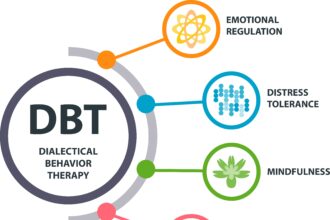More people are looking for ways to boost their mental health. We have talked a lot about traditional therapy. Our article on how therapy saves lives delves into some of the many benefits it offers.
However, not everybody wants to partake in mainstream talk therapy. There are other ways that people can work on their mental health. We talked about how the beauty industry is helping some people with their mental health, but it only helps those that have negative feelings about their appearance.
One way that people may be able to improve their mental health is by going on psychedelic retreats. Keep reading to learn about the history and mental health benefits of them.
Psychedelic retreats, where participants engage in guided experiences with substances like Ayahuasca and psilocybin mushrooms have seen a resurgence in recent years. However, the roots of these practices extend far back into human history. Understanding the historical and cultural significance of psychedelic retreats offers a richer perspective on their modern-day revival and continued relevance.
Ancient Beginnings: The Roots of Psychedelic Use
Psychedelic substances have been used for thousands of years by various indigenous cultures around the world. These substances were often integral to spiritual, religious, and healing practices.
- Central and South America: Indigenous tribes in the Amazon Basin have long used Ayahuasca, a brew made from the Banisteriopsis caapi vine and other plants. The Ayahuasca ceremony, led by a shaman, is a spiritual ritual intended for healing and connecting with the spiritual world.
- Mesoamerica: The use of psilocybin mushrooms, often referred to as “magic mushrooms,” dates back to the ancient Aztec and Mayan civilizations. These mushrooms were considered sacred and used in religious ceremonies to communicate with gods and gain divine insights.
- North America: Native American tribes have used peyote, a cactus containing the psychedelic compound mescaline, in their religious ceremonies for centuries. The Native American Church, which integrates Christian and indigenous beliefs, continues this tradition today.
Psychedelics Enter Western Consciousness
The 20th century saw a dramatic shift as psychedelics entered Western awareness, largely through the discovery and popularization of substances like LSD and psilocybin.
- 1940s-1950s: LSD was first synthesized by Swiss chemist Albert Hofmann in 1938, but its psychedelic properties were not discovered until 1943. In the 1950s, LSD began to be studied for its potential therapeutic benefits, leading to early experiments in psychotherapy.
- 1960s: The counterculture movement embraced psychedelics as tools for expanding consciousness and challenging societal norms. Figures like Timothy Leary and Aldous Huxley became prominent advocates for the use of psychedelics, promoting them as a means to achieve higher states of awareness and personal liberation.
The Revival of Psychedelic Retreats
While the 1970s and 1980s saw a backlash against psychedelics, with many substances becoming illegal, interest in their therapeutic and spiritual potential never fully disappeared. The 21st century has witnessed a resurgence in the popularity and acceptance of psychedelic retreats, driven by new scientific research and changing cultural attitudes.
- Scientific Renaissance: Modern studies have highlighted the potential of psychedelics to treat mental health conditions such as depression, PTSD, and addiction. Research from institutions like Johns Hopkins University and Imperial College London has provided robust evidence supporting the therapeutic benefits of these substances.
- Legal and Cultural Shifts: As scientific understanding grows, so does cultural acceptance. Certain regions, such as parts of the United States, Canada, and Europe, have begun to decriminalize or even legalize the use of psychedelics for therapeutic purposes.
They could very well help the one in six adults that are struggling with mental illness.
Cultural Significance Today
Modern psychedelic retreats are a blend of ancient traditions and contemporary practices. They attract a diverse group of participants, including those seeking personal growth, healing, and spiritual experiences. The cultural significance of these retreats lies in their ability to bridge ancient wisdom with modern therapeutic practices, offering a holistic approach to well-being.
- Spiritual Awakening: Many participants attend psychedelic retreats to seek a deeper connection with themselves and the universe. These experiences can lead to profound spiritual insights and a sense of interconnectedness.
- Healing and Therapy: Psychedelic retreats often provide a supportive environment for emotional and psychological healing. Guided by trained facilitators or shamans, participants can explore deep-seated traumas and gain new perspectives on their lives.
- Community and Connection: Retreats foster a sense of community and shared experience. Participants often form strong bonds as they navigate their journeys together, creating a supportive network that extends beyond the retreat itself.
The history and cultural significance of psychedelic retreats reflect a rich tapestry of human experience, from ancient rituals to modern therapeutic practices. As interest in these retreats continues to grow, they offer a unique opportunity to explore the depths of human consciousness, heal emotional wounds, and connect with a greater spiritual reality. By honouring their historical roots and embracing contemporary insights, psychedelic retreats remain a powerful and transformative practice for those seeking profound personal growth and healing.










